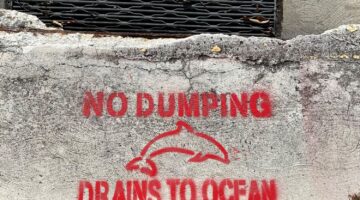MONROE COUNTY BOCC HOLDS SPECIAL MEETING ON HOUSING RECOVERY STRATEGIES DUE TO HURRICANE IRMA
MONROE COUNTY, FL – At a Special Meeting of the Monroe County Board of County Commissioners this week, the Commission was presented with options for housing recovery strategies due to the destruction and damage caused by Hurricane Irma.
The approximate Damage Assessment Results from Hurricane Irma detail 1,179 homes were destroyed throughout the Keys, and another 2,977 homes suffered major damage of the 55,000 housing units in the Keys. These numbers will increase a bit when more accurate damage assessments can be done in some of the hard-hit mobile home parks.
As a condition to the County being in the National Flood Insurance Program – which assures homeowners are eligible for federally subsidized flood insurance) – the County must adopt local regulations consistent with FEMA federal regulations. This means structures damaged more than 50 percent of the market value are considered substantially damaged and must be rebuilt to current building and flood codes. This is to assure the same structures will not be damaged in a future storm.
In unincorporated Monroe County, approximately 727 homes were destroyed and another 1,034 homes are considered to have substantial damage, bringing the total number of homes that need to be rebuilt to 1,761.
The BOCC accepted the Monroe County Housing Strategy document that was developed to communicate the County and Cities priorities for future grant programs with state and federal partners.
This document was produced by the Monroe County Housing Task Force, which was created within a week of Hurricane Irma striking the Keys on Sept. 10.
The task force, headed by Monroe County’s Director of Planning and Environmental Resources Mayte Santamaria, included members from each of the Keys’ five municipalities, the U.S. Army Corps of Engineers and several branches of FEMA. Officials from the U.S. Department of Housing and Urban Development (HUD) and the States’ Emergency Management also participated.
The task force was created to address emergency temporary housing needs and now has moved onto long-term recovery housing efforts.
“It’s been challenging,” Santamaria said. “The limited amount of workforce housing in the Keys was an issue before the storm and Hurricane Irma made it worse. But it’s been rewarding to work as a team with the all the cities and other partners to come up with creative solutions to address the long term housing recovery and to make the Keys a more sustainable place for all to live.”
At the meeting, the BOCC directed staff to further investigate upcoming grant opportunities and to look at all our options for housing recovery, which may include funding to elevate and/or harden existing residential structures by retro-fitting structures with hurricane shutters, impact windows, metal roofs and reinforced trusses. Other grant opportunities that staff will investigate include purchasing land and damaged units in special flood hazard areas to eliminate future risk and expense of rebuilding
The BOCC also discussed in detail and directed staff to work further on Comprehensive Plan amendments that would be effective for two years to accelerate the workforce housing for storm recovery. The Board directed additional density bonuses, which allow more units in a space, for workforce housing for the lowest income groups: very low, low and median.
The Board directed changes to the development review procedures for workforce housing projects to help them move faster through the process to get to the construction phase.
To this end, the BOCC directed staff to call for community meetings to be held within 30 to 60 days, instead of the current 45 to 120 days.
For text amendments, BOCC directed staff to eliminate the concept meeting with staff and the pre-BOCC impact meeting, also to speed up the process.
The BOCC discussed changing the ratio distribution of Rate of Growth Ordinance (ROGO) allocations. They currently are about 50/50, with 50 percent moderate and the other 50 percent a combined very low, low and median. The BOCC discussed a 25/75 ratio with 25 percent moderate and the remaining 75 percent a combined very low, low and median.
All of these proposed changes are to help accelerate recovery. None are in affect yet. They must all go through the public process to get adopted.
The Board also heard the current federal, state and local regulations regarding mobile home and manufactured units – and the code requirements regarding where, when and at what height they can be rebuilt.
These regulations and code requirements need to be enforced in order for Monroe County to remain in the National Flood Insurance Program.
The BOCC also discussed small modular units as a possibility for alternatives to mobile homes. The Board directed staff to put out a Request for Qualifications to build one as a model home that people could tour and evaluate.
[livemarket market_name="KONK Life LiveMarket" limit=3 category=“” show_signup=0 show_more=0]






No Comment